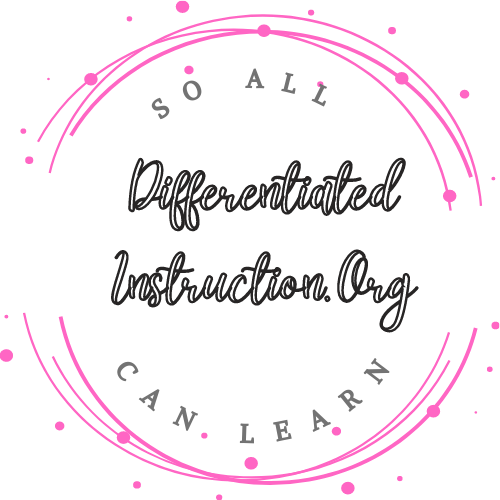Differentiated Instruction means teaching kids in one classroom with supports and strategies that makes the instruction accessible for all. It’s a fundamental expectation of teachers in the modern school, but how do you do it?

Initial Steps to Differentiating Instruction
- Check the data. There’s no real deep differentiation until you know where the learning gaps are. Where is your highest reader, and where is your lowest? Which students are getting A’s on the math tests, and which ones are failing? What would it look like for all these students to get their learning needs met?
- Identify critical problems for students. If a student is struggling in reading, *where* are they stuck? Are they unable to decode? Are they reading, but slowly? There are going to be more problem areas than can be addressed. But be aware of as many as you can. Then pull out the ones that are critical.
- Identify your biggest struggles and then seek to use your resources. Do you have a co-teacher or interventionist? Perhaps they can help. Does you school have a curriculum or approach (a reading intervention method, a PBIS system, etc) that they can bring to help? Is there a time you can meet with or instruct specific students when the rest of the class is working independently? What is the one thing your neediest student needs most, that you can address?
The Most Common Basic Differentiation Strategies in the Modern Public School Are:
Behavior Strategies
- Points chart. The student earns points for desired behavior, then wins a prize when they complete their goal. Prizes for completion might be extra computer time, lunch with the teacher and a friend in the classroom, or a hall pass to take a ten minute walk.
- Private conference. The teacher takes a minute to discuss the behavior with the student privately, perhaps just speaking quietly while standing beside the desk.
- Preferential seating. Have the student sit right next to you. Which makes number four easier:
- Redirection:. Remind the student frequently about behavior expectations.
- Whole Class Modeling: Have the whole class at a high standard of behavior, and reward them for doing things right.
Seatwork Strategies
- Working in pairs. The students help each other to complete the work.
- Sending unfinished work home.
- Extensions: Extra work for early finishers.
- Extensions: Extra hard extra credit problems at the end of the work.
- Modifications: Shorter work sets for struggling students
- Modifications: Specific supports for struggling students
Small Group Strategy
- Just to have a small group period at the end of the lesson block is probably the best differentiated instruction strategies there is. Whatever the students are working on, the small group allows you to focus in on parts of the lesson that some students didn’t get, or extensions.
Blog Posts with More Strategies for Differentiated Instruction
Differentiation in the Classroom: Eight Strategies: from ThirdSpace Learning This blog post from England takes a more “macro” approach to the idea of differentiation, encouraging teachers to look at their own big picture and find their own path.
50 Strategies for Differentiated Instruction: from Teach Thought. These include those for older students, but the overall discussion is good and many can be used in primary.
What is Differentiated Instruction? From Reading Rockets. This post includes four elementary of classroom instruction: content, process, products, and learning environment — and how the teacher can differentiate these to reach all students.

I think you’ve written a very straight forward, no nonsense and all encompassing approach to helping out our children and I know you’ve done all of these things with fidelity.